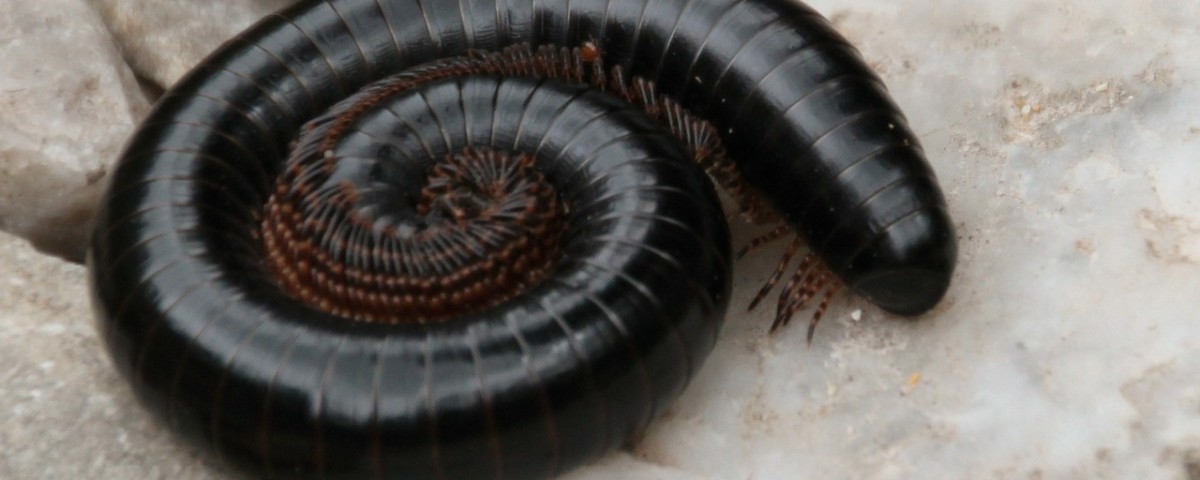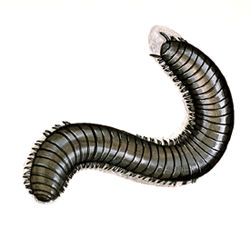Description
Millipedes, or “thousand-leggers,” are brownish, elongated, cylindrical to slightly flattened creatures, with two (most common) or four pairs of tiny legs per body segment. Millipedes don’t really have a thousand legs; even the largest ones have somewhat less than a hundred. When they walk, their legs move in an undulating wavelike manner. Adult millipedes vary from 1/2 to 6 1/2 inches in length. When prodded or at rest, most millipedes curl up.
Millipedes may be confused with wireworms because of their similar shapes. Wireworms, however, are click beetle larvae, have only three pairs of legs, and stay underneath the soil surface.
Habitat and Importance
Millipedes normally live in and feed on rotting leaves and wood and other kinds of moist decaying plant matter. Generally, their role is a beneficial one in helping to break down dead plant matter. However, when they become numerous, they may damage sprouting seeds, seedlings, or strawberries and other ripening fruits in contact with the ground.
Sometimes individual millipedes wander from their moist living places into homes, but they usually die quickly because of the dry conditions and lack of food. Occasionally, large numbers of millipedes migrate, often uphill, as their food supply dwindles or their living places become either too wet or too dry. They may fall into swimming pools and drown.
When disturbed they do not bite, but some species exude a defensive liquid that can irritate skin or burn the eyes.
Life Cycle
Adult millipedes overwinter in the soil. Eggs are laid in clutches beneath the soil surface. The young grow gradually in size, adding segments and legs as they mature. They mature in 2 to 5 years and continue to live for several years thereafter.
Control
Millipedes seldom need to be controlled. Keep in mind that they do no damage indoors and pose no health hazard. Those that stray indoors can be swept out or picked up with a vacuum cleaner. Sealing cracks and other openings to the outside helps prevent them from entering. Usually invasions are over within a few days.
Eliminating moist hiding places around the home will kill or discourage millipedes. Outdoors, this includes removing rotting wood and decaying grass and leaves from around the house’s foundation. This also eliminates millipede food sources. If there is excessive moisture in subfloor crawl spaces or basements, take measures to dry out these areas.


